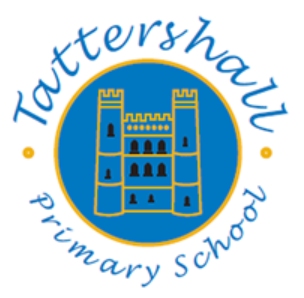Summer 1
SATs and SATs Revision
This term the Year6 children will be sitting their SATs tests.
The SATs are May 12th - May15th:
- Monday 12th - Spelling, Grammar and Punctuation
- Tuesday 13th - English Reading
- Wednesday 14th - Maths Arithmetic and Reasoning Paper 1
- Thursday 15th - Maths Reasoning Paper 2
During SATs week, children are invited to arrive at school early for 'Tea and Toast' to prepare themselves the that days tests - provided for by the school.
For any families that would like to undertake any revision with your children the following are available.
www.maths.co.uk - there are a range of assessments for the children to do on here.
www.spag.com - there are a range of assessments for the children to do on here.
https://www.cgpbooks.co.uk/primary-books/ks2/maths-english/em6cub25-ks2-year-6-english-maths-essentials - These 3 books provide children with the knowledge and revision activities they need in preparation for SATs.
English
The Ridge with Danny MacAskill
This term children will use this video to write a magazine article about the making of 'The Ridge'.
Children will look at the features of a magazine interview, and then use this knowledge to create their own. Drawing on their knowledge of newspaper articles children will recognise the similarities and differences between the two.
Features of a magazine article:
-
Catchy Title/Headline: Grabs the reader's attention immediately.
-
Hook or Lead: The first few lines pull the reader in — maybe with a surprising fact, a question, a quote, or a short story.
-
Structured Format: Often divided into clear sections with subheadings, making it easy to skim.
-
Conversational Tone: More relaxed and friendly compared to academic or news writing — sometimes even humorous or emotional.
-
Descriptive Language: Vivid descriptions, sensory details, and strong imagery help paint a picture.
-
Quotes and Interviews: Often uses direct quotes from experts, celebrities, or everyday people to add credibility and flavor.
-
Purposeful Flow: Smooth transitions between paragraphs and ideas so the article feels like a journey, not a list of facts.
-
Visuals: Photos, illustrations, infographics, or sidebars often accompany the text.
-
Audience Awareness: Tailored to the interests and reading level of the magazine's audience.
-
Conclusive Ending: Often wraps up with a strong final thought, a call to action, or something memorable
Maths
In the lead up to SATs the children will be finishing the maths curriculum - this includes the topics:
- Algebra
- Statistics and Data
- Position and Movement (moving shapes on an axis inc. translation, reflection and rotation.)
- Negative numbers
What is Algebra? Follow this link for information on the basics of KS2 Algebra.
https://www.bbc.co.uk/bitesize/topics/zghp34j/articles/z2p6tyc#z9mfcxs
https://www.bbc.co.uk/bitesize/topics/zghp34j/articles/z6bhxbk#z83ms82
Guided Reading
This term the children will be looking at the book 'From Hereabout Hill' by Michael Morpurgo - A collection of short stories.
The main focus this term will be on two stories with the first being 'The Giants Necklace' - A tragic story about a girl who wants to finish her giant necklace with cowrie shells on her families summer holiday to Cornwall. The children will read, roleplay, and analyse the text - answering a variety of questions.

Art and Design
Sculptures: Making Memories
This unit teaches pupils to create expressive sculptures and reflect on artistic decisions. Children learn to represent memories through art, using various materials and techniques, and develop skills in planning, creating, and evaluating 3D sculptures.
Pupils who are secure will be able to:
- Discuss the work of artists that appreciate different artistic styles.
- Create a sculpture to express themselves in a literal or symbolic way.
- Reflect verbally or in writing about creative decisions.
- Suggest ways to represent memories through imagery, shapes and colours.
- Draw a composition of shapes developed from initial ideas to form a plan for a sculpture.
- Competently use scissors to cut shapes accurately.
- Talk about artists’ work and explain what they might use in their own work.
- Produce a clear sketchbook idea for a sculpture, including written notes and drawings to show their methods and materials needed.
- Successfully translate plans to a 3D sculpture.
- Work mostly independently, experimenting and trying new things.
- Identify and make improvements to their work.
- Produce a completed sculpture demonstrating experimentation, originality and technical competence.
- Competently reflect on successes and personal development.
